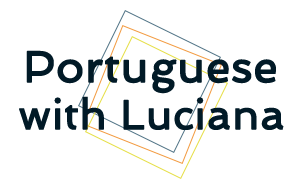Some time ago, I wrote about some problems in reading and understanding Portuguese, but as I like this subject very much I am writing another post about it, and I already have a third one in mind! 😃
In the first one, I talked about palavras homônimas, homófonas, and homógrafas. I won’t explain each of these words again here, but they are about the way the words are written and pronounced. We, Brazilians, also like to play with these words, see the cartoon below:

The first and the last words (cestas and sextas) have the same pronunciation. Sestas has an open E sound. Listen to them here:
Another tip on the first blog post was just to read a second time! Simple, but powerful to help you understand a text in Portuguese.
In this blog post, I want to focus on connotation and denotation. In Portuguese these words are called conotação e denotação.
Denotation
I’ll start with denotation just because I think it’s easier! 😆
This is the meaning of the word itself, without any changes. It’s the literal, basic meaning.
 Denotation is the language used to inform, to give facts. When you read this kind of language you won’t have poetic feelings. Can you imagine yourself feeling poetic with a scientific article or an information leaflet?
Denotation is the language used to inform, to give facts. When you read this kind of language you won’t have poetic feelings. Can you imagine yourself feeling poetic with a scientific article or an information leaflet?
When I tell my students: você pode abrir o documento da aula na página 5? I don’t mean anything else but open the lesson document on page 5! This is denotation.
Connotation
If denotation is the literal meaning of the word, I think you can now imagine connotation is the figurative meaning (not literal) – it’s an additional meaning a word gets. This meaning can also change depending on the context and related words. It’s more used in literature and it gives more emotion to the words. When you read a text and you think it’s beautiful and transmitted more than practical information to you, it’s the connotative language playing its role.
Connotation is also associated with culture.
As an example, check these lines of Ciranda da Rosa Vermelha, a song by Alceu Valença and Elba Ramalho:
Teu beijo doce
Tem sabor do mel da cana
Oh, Mariana Maria
Meu doce amor
Sou tua cama, teu engenho, teu moinho
Mas sou feito um passarinho
Que se chama beija-flor
In these lines, you can see elements of culture: Tem sabor do mel da cana and Sou tua cama, teu engenho, teu moinho. You can see a comparison: Mas sou feito um passarinho/Que se chama beija-flor. So, to understand this is a sad song you also need to know that beija-flor is a bird that flies fast and goes from one flower to another to get its food (beija-flor – hummingbird).
Now that you know connotation and denotation I think you can understand why sometimes you read and understand and sometimes you don’t. Or why you say things like: I understand the words but don’t understand the meaning of the sentence.
To understand connotation you need to go deeper than the meaning you get in a dictionary. If you look up the word cana in this dictionary, you don’t even see the words doce or açúcar: https://www.dicio.com.br/cana/ you’d have to look up for cana-de-açúcar: https://www.dicio.com.br/cana-de-acucar/ to see the words doce or açúcar.
Then you tell me: but they only saycana in the song, they don’t use cana-de-açúcar.
And you’re right because when we only say cana in Brazil, we know what it means. And now it’s the culture playing its part in the word. As we are talking about culture, if you check the dictionary again, you’ll also see the word cana has some other meanings:
[Brasil] Pop. Cachaça, aguardente.
Gír. Em cana, preso, metido na cadeia.
So, yes, in the song the kiss is sweet as cana. Cana is also the word for sugar cane, it’s a slang for an alcoholic drink and a slang for being arrested!
How do you learn all this?

I think it depends a lot on the student’s objective with the language, how much they like, or want to learn this part of the language.
One way to learn all this is by having contact with several kinds of material: reading different texts (news articles, short stories, social media posts, cartoons), listening to music, watching videos (comedy, cooking, history, lifestyle, DIY) little by little, adding nice things to your routine.
Being curious about culture will also help you!
And if you think it’s overwhelming, I don’t think so. You are not supposed to do everything in one day. When you are curious and start learning something new you know that the more you learn, the more you have to learn.
If you got curious about the end of the song above, go ahead and listen to it. Look for the lyrics online, sing along. Check where the singers are from, or when the song was first released.
Another very important point to consider here is your level. Don’t frustrate yourself by trying hard something that’s not for your level. If you started learning Portuguese two weeks ago, don’t try to read José Saramago, the Portuguese writer. Do things for your level or a bit higher.
I hope this blog post helps you not to get desperate in your future readings!



